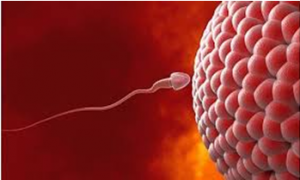Table of Contents
Introduction
Living organisms ensure their continuance on the earth by reproduction. Reproduction may occur either asexually or sexually. There is an evident difference between sexual reproduction and asexual reproduction. The sexual mode is a more complex process than the asexual mode. One crucial difference is fertilization. It is the main stage of sexual reproduction, which is absent in the asexual mode. Let’s learn more about types of fertilization.
Fertilization in Animals
The process of fusion of sperm with egg (ovum) to produce a zygote is called fertilization. It is the crucial and primary stage of sexual reproduction. During sexual intercourse, the penis ejaculates millions of sperm into the vagina of the woman. Sperms will travel through the uterus to the oviducts. At the oviduct, one out of million sperm fertilizes the released ovum. The fertilized egg develops into a zygote. Without the fusion of gametes, sexual reproduction is futile. It doesn’t occur in asexual reproduction.

Fertilization in most animals is similar to that in humans. Animals also produce gametes for fusion. But the fusion of gametes may take place inside or outside the body. Based on this, fertilization is of two types – internal and external fertilization.
Internal Fertilization
In sexual reproduction, the male inserts the semen into the female reproductive tract to fuse with the egg. If the fusion takes place within the female parent, it is called internal fertilization. In humans and most animals like cats, lions, pigs, dogs, hens, etc., the fusion of gametes takes place internally. In this type, a zygote is formed within the mother and gets its nourishment from her.
External Fertilization
When the fusion of sperm and egg takes place outside the female parent, it is called external fertilization. Only a minority of organisms exhibit this type of gamete fusion. For example, fish, frogs, etc. Here the female parent deposits her eggs in the external environment and later, the male parent ejects his sperm over them, and then the fusion of the gametes takes place in the external environment.
Gametes that fuse externally have to face many challenges. Since eggs and sperms are deposited in the external environment, the chances of fusion are very less. Predators may eat the eggs or the zygote that is formed. To compensate for this loss, organisms like fish and frogs lay hundreds of eggs at a time.
To learn in details with video lessons, download BYJU’S- The Learning app.
Recommended Video:


I love it